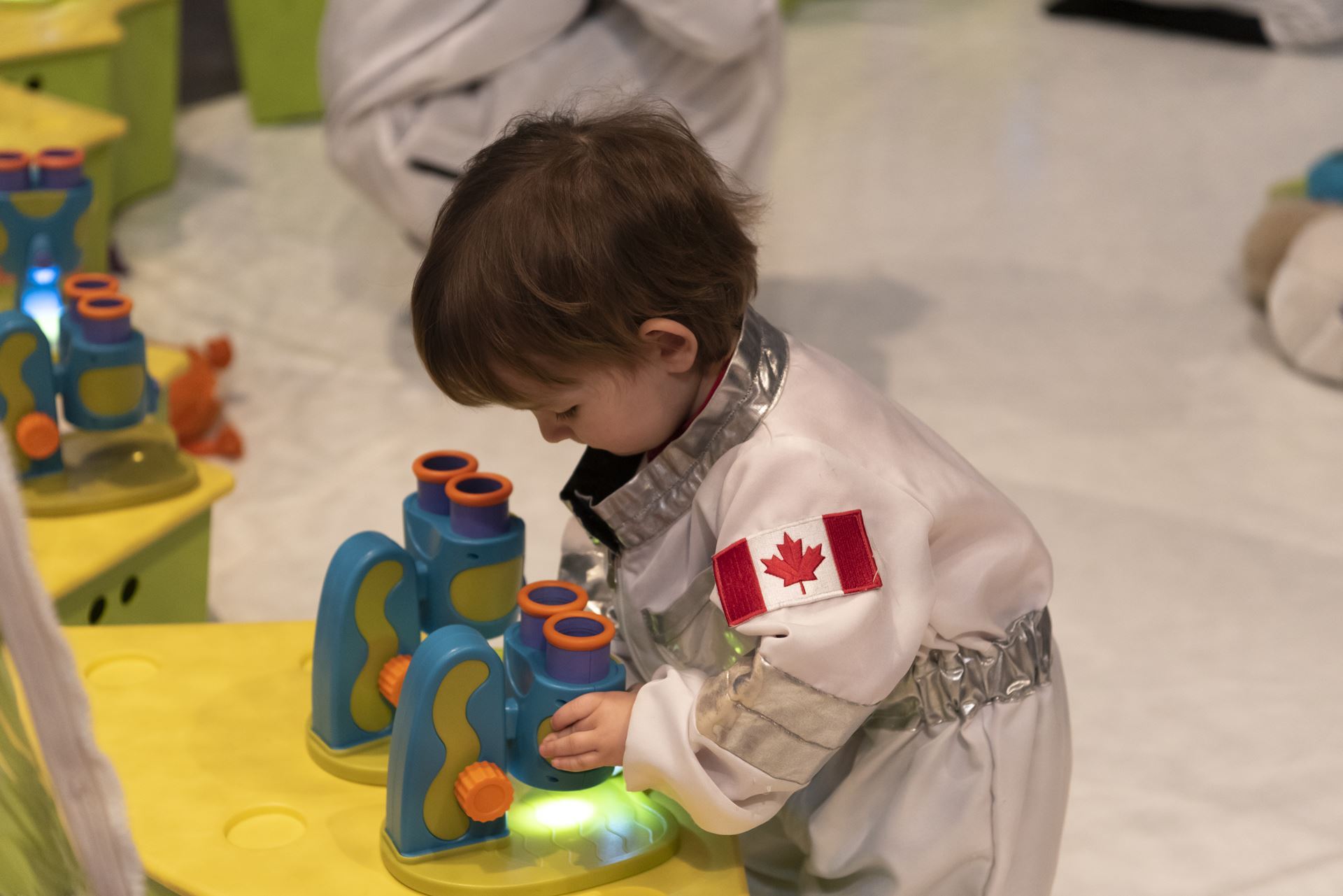By Erin Poulton
Abstract
This article is based on segments of Taming the Intangible; a presentation delivered at Interpretation Canada’s annual conference in September 2021. It examines nuances in the ways that content can be unknown to visitors, and explores how each of these differences can present inherent strengths and weaknesses.

A pint-sized astronaut conducts important space research.
(Credit: Canada Aviation and Space Museum)
Article
Curiosity is the cornerstone of a successful museum experience. Each visitor has a unique perspective—a set of interests, preferences, experiences, and pre-conceptions—that shapes their choices within an exhibition. If the opportunities for exploration mesh well with their personal motivations, a visitor will likely have an engaging, memorable, or maybe even a transformative experience.
One means of assessing this visitor-content relationship is to group potential content into three categories: what the target audience knows, what they acknowledge not knowing, and what they have not yet been exposed to. Testing is of course a valuable tool in assessing visitors’ knowledge and interest in a given topic. Consider exploring not only their existing knowledge levels, but also their self-awareness of lacking knowledge, as this can provide an added layer of insight.
In the case of “known unknowns,” to repurpose a political idiom, the audience often knows “what” but not “why” or “how.” This can include topics such as how the human body’s systems work, or why astronauts seem to float in space. In these instances, we can meet visitors where they are. By building on the visitor’s base knowledge, confirming what they know and correcting any misconceptions, we can make it easier for them to process new information. In these instances, quick understanding or mastery are possible, so we can harness that hook to encourage deeper learning. Similarly, a visitor’s general awareness of the topic may help them to acknowledge its importance and in turn augment their interest—a cognitive bias that we can work with.
In contrast, there are “unknown unknowns.” If a young child does not know what an atom is, then for them it’s a complete unknown unknown. Contrast them with their older sibling—they know that atoms exist, and while they can’t say why or how, they recognize that atoms make up all matter. Each child is starting their discovery from a different place, and requires different supporting context. This scenario presents interesting opportunities to scaffold learning through collaboration. Note that it won’t always be the youngest visitors with the least existing knowledge—children can often help their parents or caregivers to grasp new concepts! When a concept is completely new to a visitor, there are some inherent positives. We may have fewer misconceptions to unpack in presenting our material. We can also leverage the element of surprise—we have the ability to amaze!
As we have been realizing with greater clarity, a more challenging “unknown unknown” can be the ingrained biases that impact visitors’ perceptions within an exhibition. A visitor may believe in gender equality, yet still initially envision scientists or technical experts as male. Similarly, visitors may unknowingly favour more familiar historical narratives (such as Eurocentric tellings of Canadian histories). Not all visitors may have been presented with alternatives, so when unknown base concepts form the underpinning of an exhibition’s premise this can pose obstacles. Certainly, this presents rich opportunities for dialogue and learning, but once again we need to meet people where they are. We need to lay out new structures and share missing definitions in ways that respect our audiences’ needs and encourage their curiosity.
It can’t be overstressed—testing is imperative. As interpreters, we have keen perceptions about our core audiences’ needs and levels of understanding. We never really know if we are correct, though, until we test our theories. What we learn has the power to help us better tailor experiences to our audiences needs, supporting exploration and engagement.
Erin Poulton is the Exhibition Interpretation Officer at the Canada Aviation and Space Museum. She has been working in museums for over twenty years, with experience developing and coordinating a wide range of exhibitions, programs, educational resources, and events. A skilled communicator, Erin approaches her work with a balance of critical thinking and creativity.